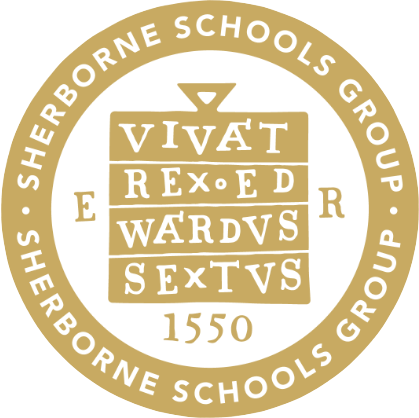.jpg?command_1=resize&width_1=220)
Patrick Francis and David Ridgway have collaborated on a stunning new history of Sherborne. They explain their joy at working together again on a unique project
 There are two ways of narrating the history of an institution. You can tell the story of its corporate life, focusing on the events that occur at a macro level and hoping the reader gains a sense of its development through this broad sweep approach.
There are two ways of narrating the history of an institution. You can tell the story of its corporate life, focusing on the events that occur at a macro level and hoping the reader gains a sense of its development through this broad sweep approach.
Alternatively, you can do what Patrick Francis and David Ridgway have done in their brilliant new history of Sherborne, Old Yet Ever Young: focus as much on the individuals who have played a part in the institution, illustrating wider themes by reference to the drama of their lives.
“I wanted to make my history come alive by telling the stories of the huge variety of people who have contributed to Sherborne’s rich tapestry,” explains Patrick. “Of course, I was helped enormously in that regard by David’s wonderful photography.”
The contribution of David Ridgway to Old Yet Ever Young cannot be underestimated. As in his previous collaboration with Patrick – Vivat Shirburnia, which charted the School’s history during the Great War of 1914 – 1918 – the words and pictures work seamlessly together to establish a clear narrative.
“When Patrick showed me the first draft of his text, I had a clear vision for what the book should look like,” says David. “We learned some valuable lessons during the production of Vivat, and decided to project manage the whole process of designing Old Yet Ever Young ourselves. That gave us complete control over the look and feel of the book, meaning we could create something very special.”
It helps enormously that David and Patrick – who have more than 70 years’ combined service at Sherborne under their belts – know not just their subject intimately, but also their audience. “It makes the process of producing a book like this far easier if you have your audience in mind as you write,” says Patrick. “That said, I’ve tried to be as objective as possible, especially about the less glittering episodes in Sherborne’s history.”
It’s true that Patrick doesn’t draw a veil over those periods when Sherborne’s status has wavered. He notes in his introduction that the School has passed through tumultuous times every 40 years or so: periods when Headmasters have been removed from office at the behest of the governors or as a result of a Common Room revolt.
“I think these blips are an important part of the School’s heritage,” he explains. “One of the functions of history is to attempt to make sense of events that go against the grain of the overall narrative. I hope that I’ve begun to do that by mapping Sherborne’s story from 1550 through to 2010.”
In contrast to the earlier history of Sherborne, written by A. B. Gourlay in 1951 with a revised edition in 1970, Patrick chose to focus on the School’s Victorian revival and the subsequent years, rather than constructing a detailed account of its medieval origins.
Such a premise is underscored by the approach David took to its overall aesthetic. With help from Sherborne’s Archivist, Rachel Hassall (for whom David and Patrick are quick to note their profound gratitude), David sourced the large number of photographs that illustrated the story Patrick was telling. Even so, he shot more than 200 of the 350 images that appear in the book, helping create a consistent visual identity that perfectly complements Patrick’s words.
“One of the things that Patrick does brilliantly is weave the stories of Sherborne’s illustrious alumni into the wider narrative of the School,” David reflects. “This dovetailed with a project I’ve been working on for the last decade, of photographing Old Shirburnians in their working environment dressed in the modern uniform of navy blue. A large proportion of these images appear in the book and illustrate its operating motif: that Sherborne is a place where the present, past and future collapse into each other, in so far as one moment in time is always mediated by what has gone before, and what is to come.”
That sentiment is exactly what Patrick hopes to express in the book’s title, which borrows from a James Rhoades poem. As he explains: “When you are at Sherborne, you are struck by the weight of all that’s gone before, while living fully in the present and gesturing towards a future that is unfolding. That’s a sentiment I hope to have captured in my writing.”
Old Yet Ever Young certainly unlocks the intimate connection between Sherborne’s past and its present. And, ending as it does in 2010, on the cusp of the School’s latest revival under the Headmastership of Dominic Luckett, it also hints towards the next chapter for one of England’s most famous boarding schools.
On the basis of what Patrick and David have produced in this beautiful, erudite and thoroughly researched account, it’s a bright future, giving Shirburnians plenty of opportunity to go on making history.
Old Yet Ever Young is available to purchase from Sherborne’s website: https://www.sherborne.org/news-and-events/book-launch. All profits will be donated to the School.





.jpg)